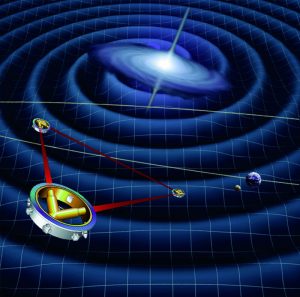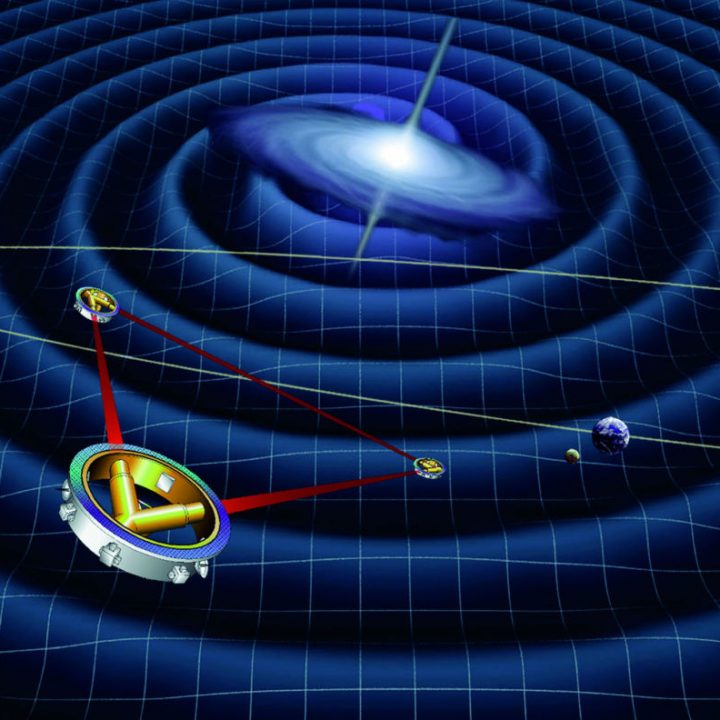
LISA
LISA (Laser Interferometer Space Antenna, launch planned in 2034) is a project of the European Space Agency (ESA) to put in heliocentric orbit a constellation of three satellites, with the aim of measuring gravitational waves in the milli-Hertz range. The astrophysical sources targeted are binaries of compact stellar masses (pairs of two neutron stars or two white dwarfs, star-to-neutron/white dwarf binaries or star-to-neutron/black hole binaries), the interaction of stellar objects on a massive black hole (extreme mass ratio inspiral – EMRI) or the merger of super-massive black holes during the hierarchical formation of galaxies
The ultra-precise radio timing programs of pulsars are complementary to the future LISA observations, since they allow to characterize the gravitational emission of neutron star binaries and star-to-neutron/dwarf-white hole pairs from the evolution of the orbital elements (advance of the periastron, variation of the period and of the semi-grand-axis). They allow to select sources of interest for LISA and to increase their possibility of detection by the direct observation of their gravitational emission or conversely, to search for pulsed emission in radio waves in new LISA sources, and the confirmation of their nature of binary pulsar. On the other hand, the supermassive black hole binaries, which we hope to detect by the timing of an array of millisecond pulsars (PTA programs) in their spiral phase, will be LISA sources a few decades later at the time of their merger. The ASTRO team of LPC2E participates in the LISA France group, for the support brought by radioastronomy and for theoretical developments on the gravitational emission of EMRI.

